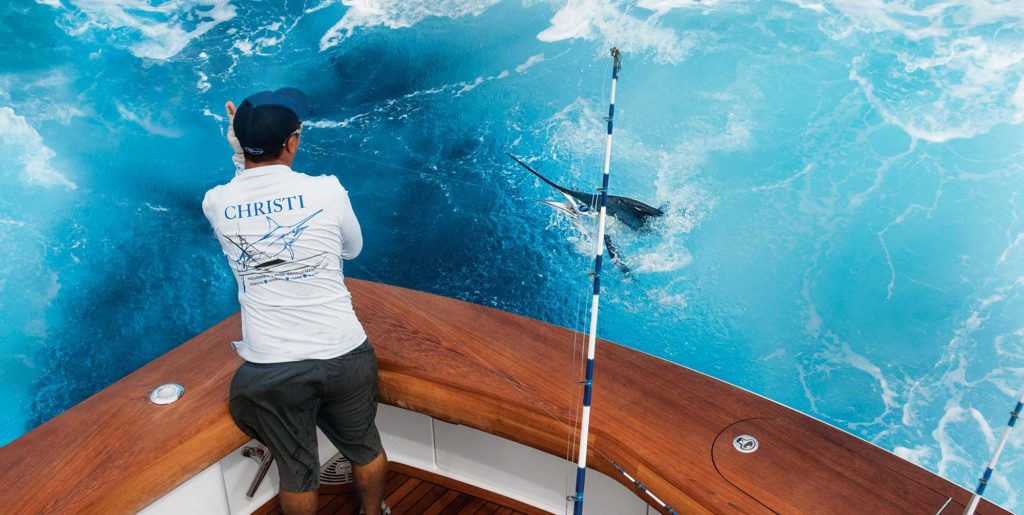
As we approached the rip line that signaled a temperature break, Capt. Jon Duffie pointed out the birds working along the edge and the marks on his depth finder. The large bait pod was clear enough, but then arches started to appear 75 to 100 feet down. “White marlin,” Duffie warned. “We’re gonna hook up.” He had barely yelled a warning to the cockpit when the port rigger went off and the water erupted under the frenzied jump of our first marlin of the morning. He slowly turned to keep the fish inside a wide circle, then the starboard flat line went off and another marlin skyrocketed, tail-walking away from the boat. More whites started popping up behind the daisy chains and dredges, and the cockpit buzzed. Anglers grabbed pitch-bait rods and free-spooled ballyhoo to individual fish. In almost no time had we five on, and everyone was moving, ducking under bent rods to keep from tangling. When you get one marlin on, it’s crazy, but multiply it by three or four, and it is sheer pandemonium. This scene repeats every summer in the mid-Atlantic states, and with a modest-size boat, some knowledge and preparation, you can get in on the action.
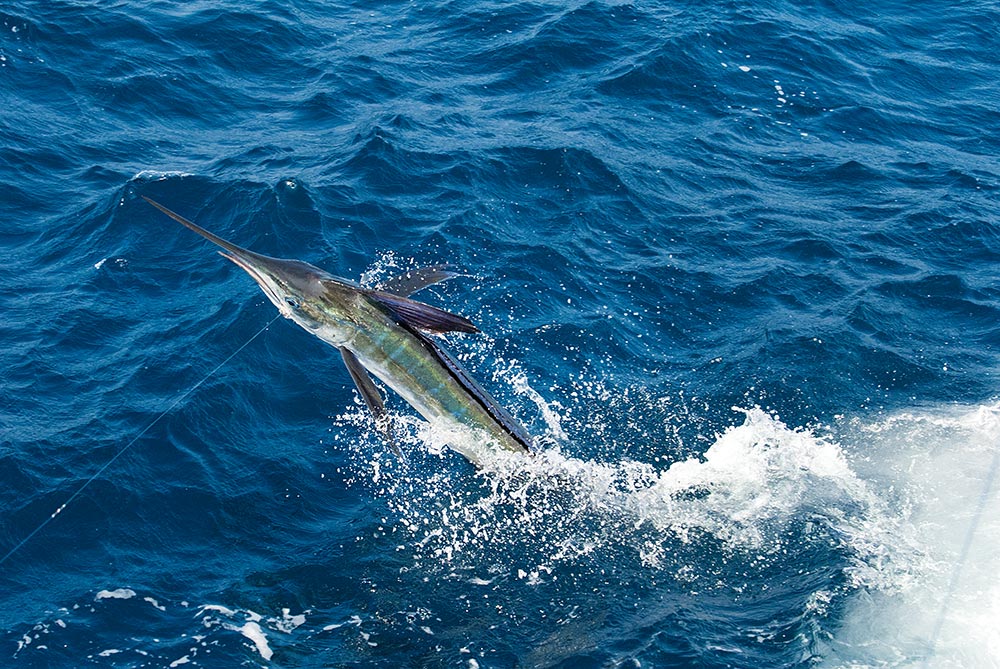
Marlin on the Move
White marlin, the smallest Atlantic marlin, typically run 40 to 60 pounds — perfect on light tackle. Though diminutive, they are among the most acrobatic marlin, jumping repeatedly for most of the fight.
They migrate into mid-Atlantic waters beginning in late June, on warm eddies that break off the Gulf Stream and carry blue water and bait onto the continental shelf. The earliest fish are caught well offshore, typically off New Jersey, requiring long runs, but as summer progresses, wolf packs of whites spread out along the edge from the Hudson to Norfolk Canyon. They frequently move well inshore, within reach of any boat capable of making the run to midshelf waters.
By August vast numbers haunt the waters from Cape May, New Jersey, to Virginia Beach, Virginia, making them easy targets for center-consoles.
As fall approaches, they concentrate, feeding voraciously until the first cold snap in mid- to late September. Then they mysteriously disappear. It’s all part of their annual migration from equatorial waters, through the Caribbean, and across the Gulf Stream to our shores — and then back again.
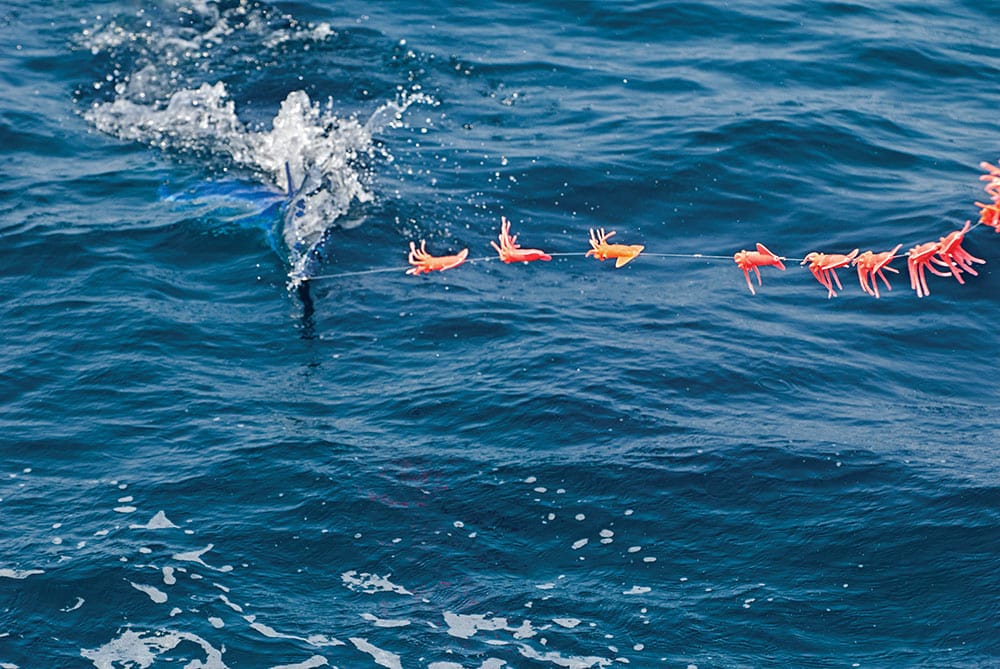
Big Tease
Tournament boats fish a surprisingly simple pattern for whites, and it’s easily scaled down for smaller boats. The spread always centers on a combination of surface teasers and dredges to raise fish, with four small ballyhoo as hook baits. One ballyhoo is run off each outrigger and set well behind the teasers; the other two are run closer to the transom off flat lines between the dredges and surface teasers. Two or three more rods armed with the same baits sit at the ready as pitch baits for when a pack of marlin comes into the spread.
“In tournaments, I run two dredges filled with rigged ballyhoo or mullet,” Duffie says, “but when we aren’t competing, we use Squidnation dredges armed with 9-inch plastic squids and mudflaps.”
The dredge is key, and even one is better than no dredge at all. To keep it simple, run your dredge off a downrigger, adjusting the depth as needed. Duffie often takes one dredge out of the water when there is a good bite. Red squids are deadly, pink and natural are a close second, and mudflaps add the appearance of predators attacking the squids. Each dredge has a horse ballyhoo under an Xpress or Ilander skirt down the center about 4 feet back, with no hook.
A surface teaser pulled from each outrigger sits beyond the dredges. Small pink spreader bars are deadly teasers, and so are pink and green plastic squid daisy chains. Surface teasers get the horse ballyhoo and skirt treatment too.
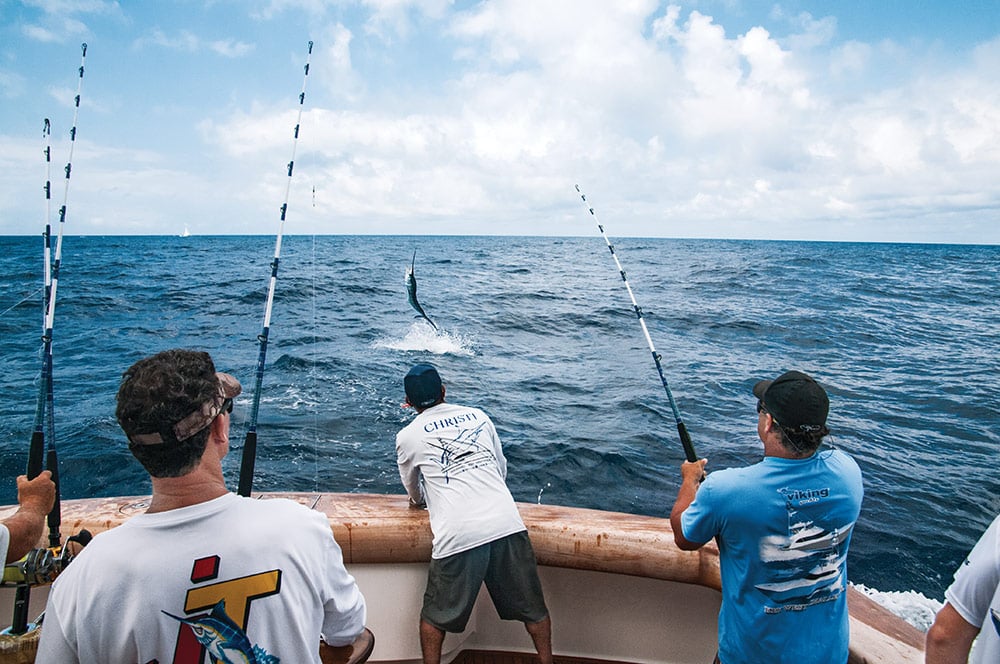
Round and Round
Set your trolling speed between 5½ and 6½ knots while scanning for rips, slicks and bird activity. Even a concentration of storm petrels dipping the surface may point to marlin feeding below. Whites are pack hunters that prey on schools of small baitfish, attacking from different directions to break up the baitball. When you find one, you’ve found a pack. Approach it accordingly.
“Always fish for multiple hookups,” Duffie says. “The best teaser you have is the first fish you hook, so don’t rush that one to the boat. Maneuver the boat in a circle around the first fish, adjusting the dredge depth to bring more fish into your pattern.”
Read Next: 12 Best Billfish Destinations in the World
Work that fish slowly, and as more marlin show behind your teasers, pull the flat lines from the clips and bring them into play or begin dropping back pitch baits.
“Always have a 50-pound-class outfit armed with a large rigged ballyhoo ready in the cockpit, because blue marlin will come into your spread too,” Duffie advises. “If it’s a small one, you can use the white marlin tackle, but if it’s a big one, break out the 50.”
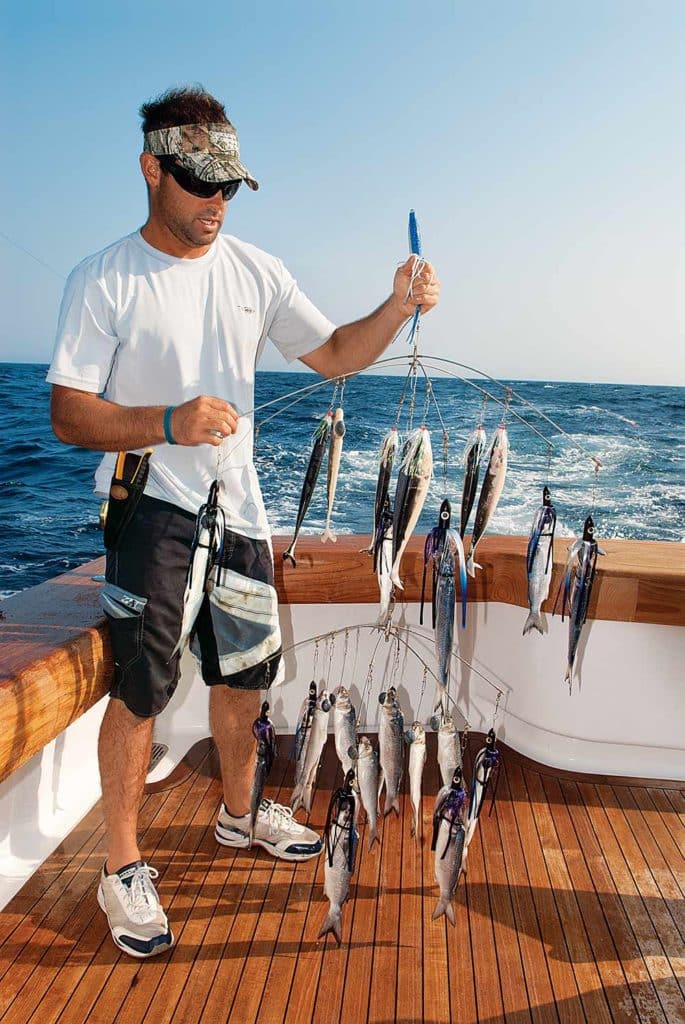
Finding ‘Em
Capt. Mike Standing, owner of Waterman out of Virginia Beach, follows whites throughout their migration. The earliest fish of his season arrive along with schools of tinker mackerel, feeding at depths to 300 feet with rarely any surface activity.
The start of the trolling season comes as schools arrive on warm eddies that drift down the shelf over the summer. Tracking ocean-current movements with sea-surface temperature charts is critical to locating marlin. In late summer, whites settle into more predictable areas and move inshore to the southwest. While the early bite starts well offshore, most eddies eventually work their way into the canyons, and the western edges can push into 50 fathoms or shallower, making for a short ride to great fishing. The season peaks in late August and only gets crazier in September until the action abruptly ends.
Read Next: Offshore Fishing at Cape Hatteras
If the last few years are an indicator, fishing this season should be excellent. White marlin stocks have been resurgent over the past 15 years as anglers practice catch-and-release and the commercial pelagic longlining fleet has diminished. Double-digit days of white marlin fishing were common last year, and when you really get on them, you can rack up the numbers fast.
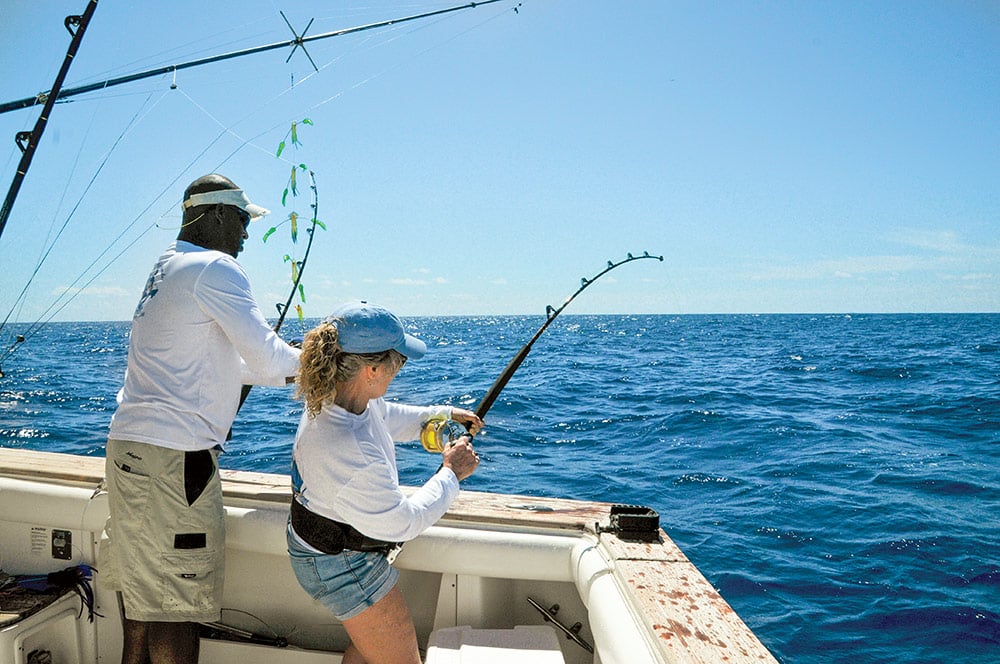
SWS Planner: Mid-Atlantic White Marlin
What: White marlin
Where: New Jersey to the Outer Banks
When: July through September
Who: Cape May, New Jersey
Capt. John Sowerby
Hooked Up II
cavemansportfishing.com
Ocean City, Maryland
Capt. Kyle Peet
No Quarter
ocsunsetmarina.com/occharters
Capt. Gary Stamm
Buckshot
ocsunsetmarina.com/occharters
SWS Tackle Box: Mid-Atlantic White Marlin
Rods: 6 1⁄2-foot, 30-pound trolling rods
Reels: Shimano TLD20, Shimano Trinidad 20, Penn Squall 16VS, or equivalent
Bait: Small to medium ballyhoo rigged naked and with flash; Squidnation dredges rigged with plastic squids and mudflaps with large ballyhoo trailers under Ilander and Xpress skirts; pink and green daisy-chain teasers with horse ballyhoo trailers; pink spreader bars rigged hookless as teasers
Line: High-vis 30-pound mono
Hooks: Mustad 309551 BLN circle hooks









